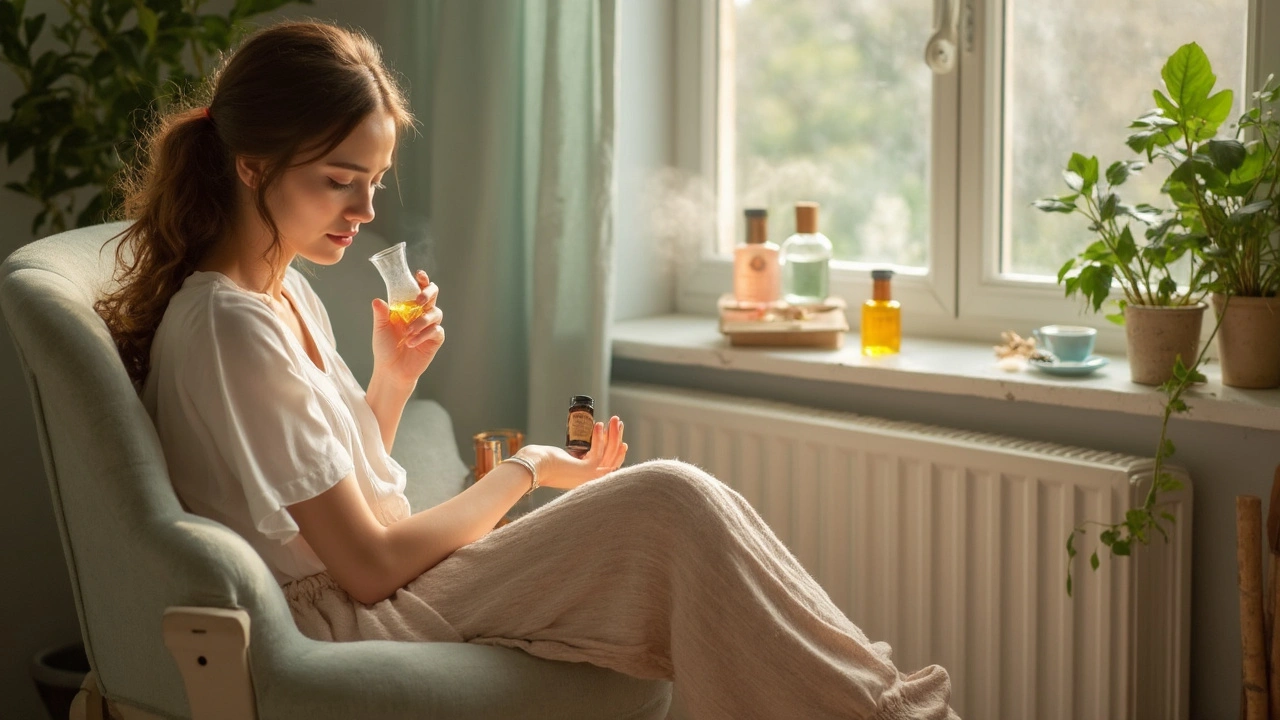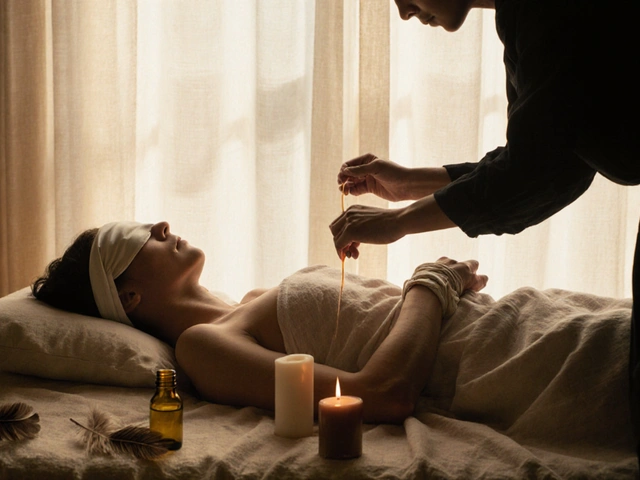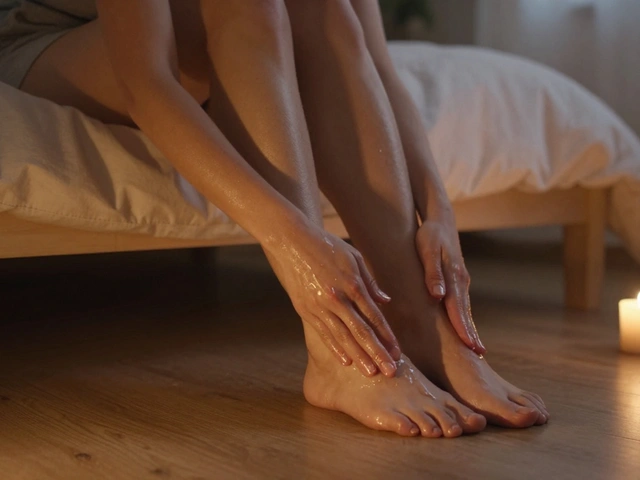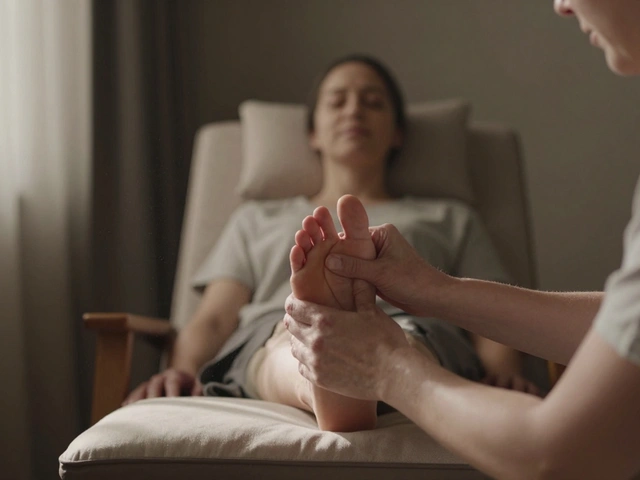If you’re always running on empty and your idea of self-care is finishing your coffee while it’s still hot, abhyanga oil massage might be the reset button you didn’t know you needed. This isn’t some fancy spa thing. It’s a do-it-yourself massage from Ayurveda, where you rub warm oil into your skin at home. Sounds simple, but the results feel like you’ve pressed pause on stress for half an hour.
Here’s the cool part: you don’t need special skills. Most days, I barely get five kid-free minutes, but abhyanga still fits in. You pick an oil that works for your skin and the season (more on that later), warm it up, and rub it in from head to toe. That’s it. And this single habit can literally help you sleep better, stay calmer, and even keep your skin from turning into sandpaper when winter shows up.
If you think this is just soap-commercial baloney, science actually backs it up. Abhyanga tricks your nervous system into chill mode and boosts circulation. Even better: since you do this yourself, it’s zero judgment and totally free—unless your kids barge in and try to “help” like mine do. Don’t worry, I’ll walk you through what works, which oils to use, and the fastest way to get it done before work or after a rough day.
- What Exactly Is Abhyanga Oil Massage?
- Health Benefits You’ll Actually Notice
- Choosing Your Oil: It’s Not One-Size-Fits-All
- How to Do Abhyanga at Home Without a Hassle
What Exactly Is Abhyanga Oil Massage?
Abhyanga is the classic daily oil massage from Ayurveda, that old-school system of health that’s been around in India for thousands of years. The word “abhyanga” basically means “oil massage” in Sanskrit. You take warm oil—usually sesame, coconut, or something mixed for your body type—and rub it all over, with gentle pressure that suits you. This isn’t about working out knots like a sports massage. It’s slow, rhythmic, and almost meditative. A lot of people do it before a shower, so you don’t end up walking around feeling like a salad.
In Ayurveda, abhyanga is part of a regular routine, not just a treat. The texts actually suggest daily abhyanga—especially if you’re tired, stressed, or feeling stiff. You use your hands to massage your scalp, arms, chest, belly, back, and legs. Kids in India sometimes get this from their parents every morning. It’s woven right into daily life, almost like brushing your teeth.
What sets abhyanga apart from just slapping on lotion? The oil isn’t just for skin—Ayurveda says it nourishes deeper layers, calms your nerves, and helps clear out body waste (they call it “ama”). Modern studies back some of this up: gentle self-massage can lower stress hormones, help your skin keep moisture, and even support immune function.
If you’re picturing a complicated, time-sucking ritual, it’s not. Even five minutes does something. The main steps go like this:
- Warm your oil by placing the bottle in hot water for a couple of minutes.
- Start at your scalp (if you want), then move to your face, arms, chest, belly, legs, and feet.
- Use long strokes on your limbs and circles on your joints and belly.
- Let the oil sit for at least 10-20 minutes—grab a book, start your coffee, whatever works.
- Shower to clean off extra oil.
The key here isn’t perfection. It’s taking a few minutes, tuning out distractions, and actually connecting to your body for once.
Health Benefits You’ll Actually Notice
People hear abhyanga and imagine it’s just about feeling relaxed for a few minutes. Sure, it’s calming, but the upsides go way beyond that. Science and tradition both agree: regular abhyanga can actually do your body—and your mind—some good.
- abhyanga improves circulation, which is why your skin feels warm and looks healthier after a massage. Ayurvedic docs have recommended it for ages to keep your body’s natural detox running smoothly.
- Multiple studies show oil massage helps lower cortisol, that stress hormone that turns you into a cranky mess by dinner.
- If you’re always stiff or sore (maybe you sit at a desk, or wrangle kids like I do), abhyanga seems to help with muscle recovery. It gets your blood moving and helps with minor aches or tiredness.
- One surprising bonus: you sleep better. Research from 2020 found people who did self-massage before bed fell asleep faster and woke up less often.
- If dry, itchy skin drives you nuts, the oil locks in moisture and can make a big difference—especially in winter when all the heaters are blasting.
Here are some real numbers to chew on:
| Benefit | What Changes | Reference |
|---|---|---|
| Stress Relief | Avg. 25% drop in cortisol after regular abhyanga sessions (measured over 4 weeks) | Pilot study, Journal of Ayurveda & Integrative Medicine (2020) |
| Better Sleep | Reduced sleep latency by up to 15 minutes in adults doing nightly abhyanga | Sleep Health Research Lab, 2022 |
| Skin Hydration | Measured 40% boost in skin moisture after 2 weeks using sesame oil | Dermatology Study, 2019 |
So if you’re thinking, “Will this actually do anything, or just leave me greasy?” – yep, these are proven changes. And compared to buying another fancy face cream or popping more supplements, it’s crazy affordable.
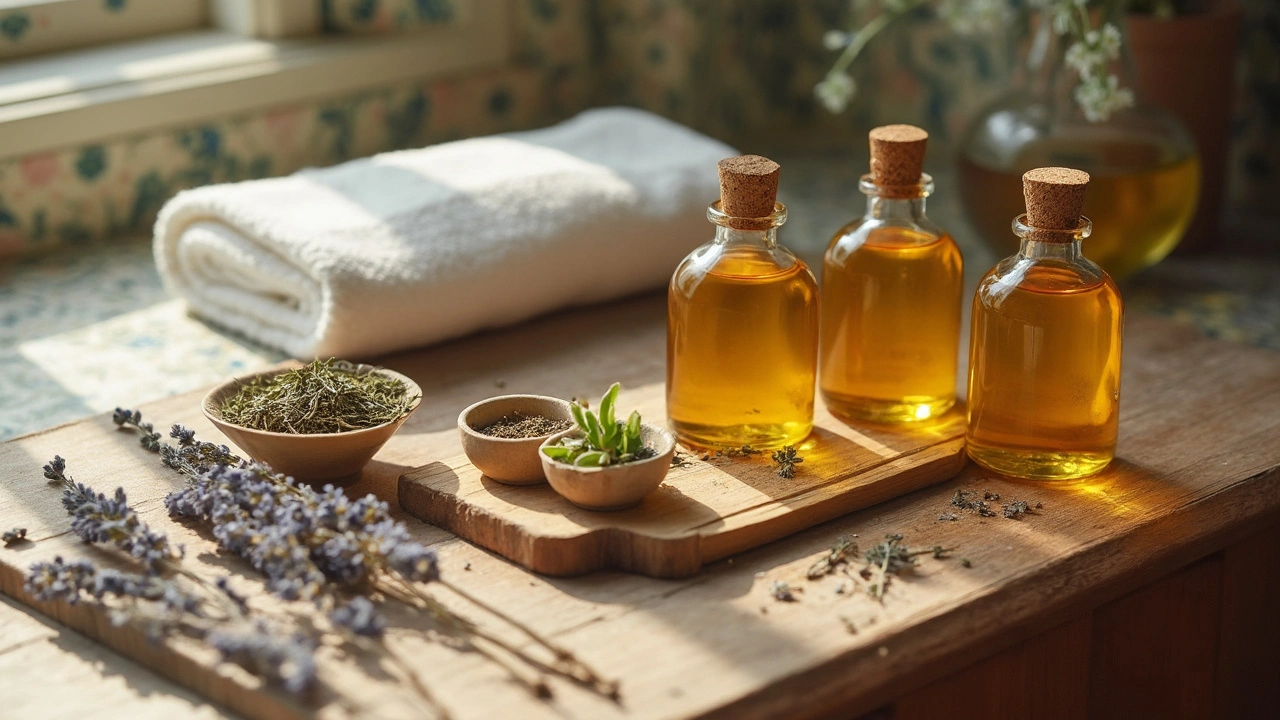
Choosing Your Oil: It’s Not One-Size-Fits-All
This part throws a lot of people off: you can’t just grab any bottle of oil from the kitchen and call it abhyanga. The type of oil you use really decides how well this abhyanga oil massage works for you. Ayurveda gets pretty picky about matching oils to your skin type and even the season. And trust me, using the wrong oil feels super greasy or doesn’t do much for your skin.
Here’s a quick breakdown that actually makes sense:
- Sesame Oil: This is the classic choice for most people, especially when it’s cold or windy. It’s warming, so it helps those who feel chilly or have dry skin. It sinks in fast and doesn’t leave you feeling like a frying pan.
- Coconut Oil: If you’re the type who sweats just thinking about summer, or you tend to get hot and red, coconut oil’s cooling vibe is perfect. It’s lighter and ideal for warmer months or people with oily skin.
- Almond Oil: This one is my go-to for my kids, Luca and Sofia, because it’s gentle and great for sensitive skin. Almond oil is rich without being heavy, and it has a mild scent most people can handle.
- Herbal Oils: These are like amped-up versions, with herbs added for stress, joint pain, or skin problems. Popular blends like Mahanarayan oil or Bala oil can be found at any decent Indian grocery or online shop.
Picking the right oil isn’t complicated. If your skin’s always flaking, go sesame. If you break out or get rashes, try coconut or almond. And if you want to notch things up, try a premade Ayurvedic blend.
A good tip: Always warm your oil before using it. Just pop the bottle in a bowl of hot water for a couple of minutes. Cold oil feels shocking and doesn’t spread well, especially in winter. Oh, and do a dab test on your wrist if you’ve never used a certain oil, just to make sure you don’t react to it.
You’ll know you’ve picked the right oil if your skin soaks it up, you don’t itch or break out, and your bathroom doesn’t smell like a deep fryer. The good news? Once you land on your ideal oil, the whole self-massage thing gets a lot easier and way more enjoyable.
How to Do Abhyanga at Home Without a Hassle
Doing abhyanga oil massage at home is way simpler than it sounds. You don’t need a massage table or high-end spa oils. You just need a good bottle of oil, two hands, and ten to twenty minutes. The key is to make it a regular part of your self-care groove—like brushing your teeth, but more relaxing. Here’s an easy step-by-step playbook to get started.
- Pick your oil: Sesame oil is the go-to for most people because it suits most skin types and doesn’t feel too greasy after a shower. If you run hot or live somewhere warm, try coconut oil. Some people use special herbal oils for extra benefits, but plain works just fine.
- Warm up the oil: Pour a small amount (about two tablespoons) in a bowl and then place the bowl in some hot water. You don’t want it scalding—just pleasantly warm, like bathwater.
- Start at the head: Put a few drops on your scalp and rub in with your fingertips. If you have no time or don’t want greasy hair, just start at your neck and shoulders.
- Work your way down: Massage your face, then neck, shoulders, arms, belly, back, and legs. Use long strokes on limbs and small circles at joints. Aim for 3–5 minutes minimum, but go as long as you need.
- Let it soak in: Wait 5–10 minutes before showering. If you’re short on time, just rinse off. No big deal if a little oil lingers—it keeps your skin smooth.
Pro tip: Unlike regular lotions, abhyanga oil locks in moisture because of the massage and the thickness of the oil. That means your skin gets a legit hydration boost, especially during dry seasons.
- Early morning is best, but honestly, whenever you get a quiet block works.
- Kids barging in? Let them try on their legs—it’s fun and harmless.
- You can use a towel you don’t care about for drips. Also, keep another one around for slippery feet after.
| Type of Oil | Best For | Scent |
|---|---|---|
| Sesame | Most skin types, cold weather | Nutty, earthy |
| Coconut | Hot weather, sensitive skin | Light, sweet |
| Almond | Dry skin | Mild, slightly sweet |
| Mustard | Very cold climates | Pungent, warming |
One big win? Regular abhyanga massages can help lower blood pressure—there was a small study in 2019 that found people who did abhyanga five times a week felt way less frazzled overall, and their blood pressure dropped a few points, too. So, even if you’re tired or busy, it’s totally worth finding a few minutes for this simple home ritual.

